TYPES OF ASBESTOS
There are six types of fibrous minerals called asbestos. Exposure to asbestos fibers is the leading cause of mesothelioma lung cancer. Before reading about the types of asbestos, please take a moment to review a patients recent experience with mesothelioma in 2013.
Dr. Bill McQueen, beloved physician, husband, father and friend of many. He loved, lived, fought the disease and died from Pleural Mesothelioma cancer at 65 years of age.
Upon discovery of having mesothelioma cancer, Bill McQueen under went surgery to have the disease removed in April 2011. In February 2012, he was still submitting to follow-up exams every three months. And sure enough, after a short pause in cancer growth, the disease was found growing again.
Bill had two siblings, a brother and a sister, who died by mesothelioma. Where he and the siblings might have been exposed to asbestos fibers which caused mesothelioma is uncertain, but the farm he grew-up on had many sources where asbestos was used and present for exposure. Being born in 1948, Bill's childhood was when everything had asbestos fibers in it.
As it is with most patients found to have mesothelioma, Bill did not discover he had the disease until its symptoms were noticeable in the last stages of development before death. Mesothelioma symptoms often do not appear for decades after a person is exposed to asbestos fibers.
The news of Bill having mesothelioma caused a transformation in his family's life as now the focus and purpose of living would be to help him overcome his disease. For the youngest girl in the family, this felt like the end-of-the-world for Bill's daughter because he had always been such a strong influence and impact on her growing up. Initially, Bill's wife and children considered the bad news as the beginning of the end, until they started to do some research about mesothelioma and prospective cures. The research revealed that the science about mesothelioma has greatly improved making significant advances in identifying a cure. Because there are many clinical trials available to patients stricken with this disease, Bill's wife felt hope and encouragement that there might be a cure to his condition. Consequently, the family had a recognizable positive attitude and outlook about Bill's infliction through which they never gave up hope for finding a cure because they found so many options to try.
The choices the family made together in response to mesothelioma cancer could only extend their loved one's life a short period. Bill soon died from mesothelioma, as he went to bed one evening to rest peacefully, fell asleep and did not wake up the next morning.
Bill's legacy is that he loved, lived, and fought the disease. He is still so admired by everyone as the people recall Bill as a joker with a great sense of humor that brought joy and laughter.
Everybody loved Bill.
If you, or a loved one, has recently been diagnosed (or suspect infliction) with mesothelioma cancer, we understand the process and emotions you'll experience while making choices about your future. Please consider and feel welcomed to use the Mesothelioma Research Foundation of America as a source for ideas and options about how to deal with this disease. Our research and experience is freely offered to patients with mesothelioma. Use our Ask Dr. Gill form to bring your questions and concerns to us. We will return your request for answers in a timely manner. Let our experience add to your search for a cure to mesothelioma.
Bring your medical questions about mesothelioma and asbestos to Dr. Gill !
When you want answers to your questions about your exposure to asbestos and getting mesothelioma, please use this form to send a request and Dr. Gill will send you a reply by return e-mail.
Please allow some time for him to respond, depending on his schedule and the volume of questions this can take a few hours or days.
Compose your question for Dr. Gill here:
*required information
Asbestos is a group of six fibrous minerals that occur naturally in metamorphic deposits located around the world. Of the hydrous magnesium silicate variety, the six types include tremolite asbestos, actinolite asbestos, anthophyllite asbestos, chrysotile asbestos, amosite asbestos and crocidolite asbestos. Asbestos is a chemically inert mineral that is fire resistanct and does not conduct heat or electricity (making it a commonly used insulator), is insoluble and is without odor. Asbestos' combination of properties made it a valuable resource, regularly used in buildings, automobiles, shipyards and a variety of household products.
Tremolite Asbestos
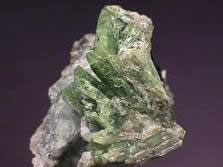
Tremolite
Tremolite asbestos was not often used industrially or commercially; though it could be found (uncommonly) in products such as certain talcum powders in limited amounts.
Actinolite Asbestos
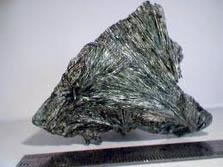
Actinolite
Actinolite asbestos was not often used industrially or commercially. Airborne actinolite fibers are easily inhaled and severely damaging to the lungs.
Anthophyllite Asbestos
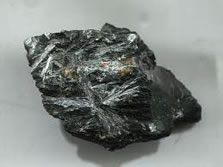
Anthophyllite
Like tremolite and actinolite, anthophyllite was not often used industrially or commercially; though it could occasionally be found in certain vermiculites.
Chrysotile Asbestos
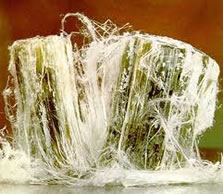
Chrysotile
Also called white asbestos, chrysotile asbestos is unique in that it has a serpentine fiber-formation (curled fibers) compared to the amphibole fiber-formation (straight, needle-like fibers) of the other five asbestos types. Chrysotile asbestos is less friable (less-likely to be inhaled) than other types of asbestos. Chrysotile asbestos is less likely to be inhaled and therefore viewed by many to be the safest of the asbestos types.
Amosite Asbestos
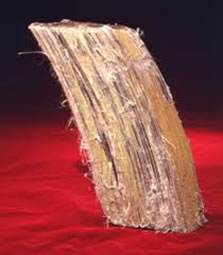
Amosite
Also called Grunerite or brown asbestos, amosite asbestos is an amphibole originating in Africa. Amosite was used industrially for various purposes such as cement sheet and pipe insulation.
Crocidolite Asbestos
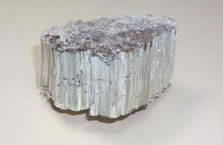
Crocidolite
Also called blue asbestos, crocidolite asbestos is an amphibole mineral that can be found in Africa and Australia. On the opposite end of the spectrum than chrysotile asbestos, crocidolite is viewed to be the most dangerous type of asbestos.

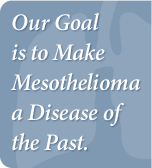
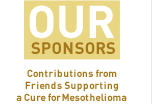
For questions related to the foundation and to make contributions please contact:
Executive Director
Toll Free:
(800) 909-Meso (6376)
3011 Townsgate Rd, Suite 450
Westlake Village, CA 91361
For more information and other questions contact:
(800) 909-6376
©2024 Mesothelioma Research Foundation Of America

